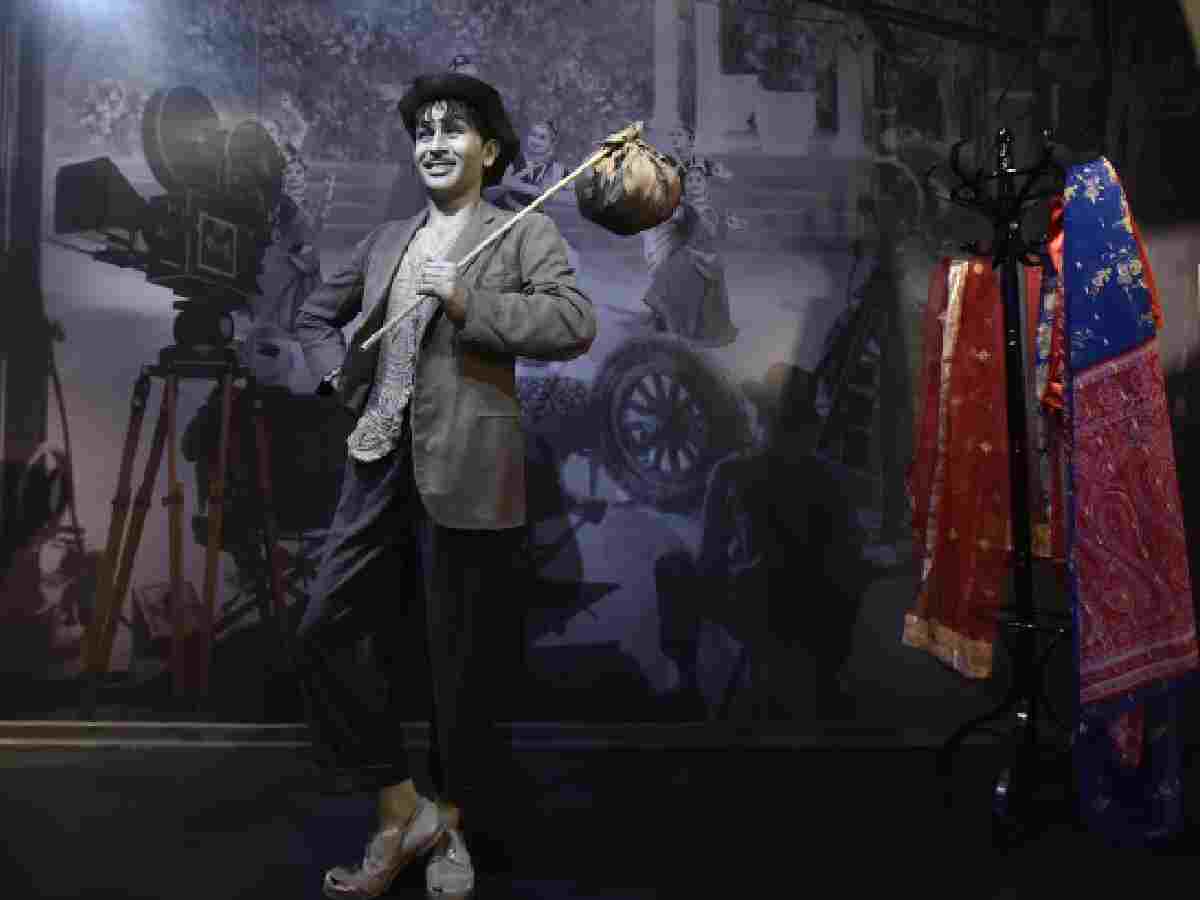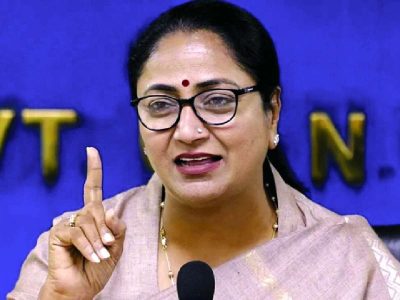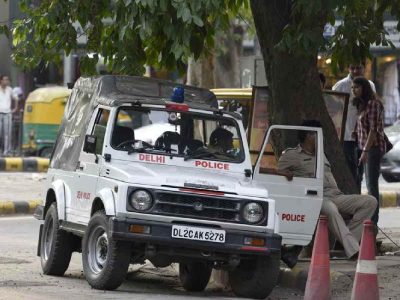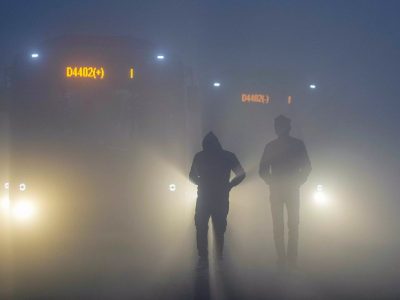Film historian Manish Chaudhary is a busy man these days as he is currently working overtime to finalise the centenary celebration function of Bollywood’s original showman, Raj Kapoor. It will be held on December 14, Raj Kapoor’s birth anniversary.
“For Raj Kapoor, Delhi was second home as his first daughter, Ritu Kapoor Nanda, was married here. Moreover, he always used to visit Delhi during the premier of RK Banner films,” says Chaudhary, who teaches at Daulat Ram College.
Kapoor died in Delhi in 1988. Just a few days before his death, on May 2, 1988, he was honoured with the prestigious Dadasaheb Phalke Award by the then President R. Venkataraman at Siri For t Auditorium. Sadly, his health took a turn for the worse shortly after. He was experiencing severe breathing difficulties and was rushed to AIIMS (All India Institute of Medical Sciences).
Doctors, led by Dr JN Pandey, did everything they could to save him, but his condition did not improve. His death was attributed to complications from asthma.
Raj Kapoor always wanted his films to be released at Regal or Moti cinemas. Regal was perhaps the first cinema hall of New Delhi and had a special place in his heart. His iconic films like Sangam, Mera Naam Joker, Satyam Shivam Sundaram, Boot Polish, and Jis Desh Mein Ganga Behti Hai were all released at Regal and Moti. Most of the RK banner films have done great business in the Capital.
Even his father, Prithviraj, had acted in plays at Regal. In its early days, Regal showcased both English and Hindi productions. Sadly, Regal closed its doors in 2017. Moti shut a little later.
For Shashi Kapoor, visiting Regal brought back a flood of memories of his elder brother, Raj. He had visited the iconic Connaught Place theatre with him a couple of times.
He once said, “RK banner film Satyam Shivam Sundaram did brisk business here at Regal.”
‘Ab Dilli Door Nahin’
Perhaps Raj Kapoor’s tryst with Delhi began in 1957 when he produced the film Ab Dilli Door Nahin. The screenplay of the film was written by renowned author Rajendra Singh Bedi.
The film featured actor Motilal, a close relative of singer Mukesh. Both hailed from Nai Sarak.
The film also featured a young Amjad Khan, who later gained immense popularity as Gabbar Singh in the 1975 Bollywood classic Sholay.
Ab Dilli Door Nahin featured scenes from Delhi, including the old iron bridge over the Yamuna, Daryaganj, and Connaught Place.
Deep Ties With Delhi
Raj Kapoor’s relationship with Delhi deepened in 1970, when his eldest daughter, Ritu, married Rajan Nanda, son of HP Nanda, the Chairman of Escorts Group.
The Nanda family had migrated to Delhi from Lahore after Independence. They owned a prominent transport company in Lahore called Nanda Transport. After Ritu moved to Delhi, Raj Kapoor would frequently visit her home in Jor Bagh whenever he was in the city.
Rajan Nanda later got related to Amitabh Bachchan when his son, Nikhil Nanda married Big B’s daughter, Shweta Bachchan. Today, Nikhil Nanda is the Chairman of Escorts Group. HP Nanda was the founder of Escorts Hospital.
“Arguably, the Kapoor clan is the first family of Bollywood and they have had very deep and emotional ties with Delhi. As far as Raj Kapoor, whom we all used to call ‘Papaji’, was concerned, he always ensured that films of his banner release in Delhi in a big way. For the premier of his films, he always came here with his entire family and stayed at Ashok Hotel,” says author and noted astrologer JP Trikha.
“Even though the Kapoor family has long been in Mumbai, they look for suitable brides and grooms for their kids in Delhi.”
Prithviraj Kapoor’s Delhi Days
Even the noise of traffic from India Gate can be heard within Princes Park. A few elderly residents still remember when Prithviraj Kapoor lived in one of the flats there. This was during the time he served as a nominated member of the Rajya Sabha (1952-1960). It is believed that Prithviraj accepted the position of Member of Parliament at the request of Prime Minister Jawaharlal Nehru, who sought his advice on matters of art and culture.
They would often discuss the role of art and culture in the newly independent nation. Prithviraj is credited with suggesting to Nehru the establishment of the prestigious National School of Drama (NSD) in 1959.
“Prithviraj Kapoor would often stay in Delhi during Parliament sessions. He would return to Mumbai afterwards to complete his film shoots. Before becoming an MP, he had staged numerous plays with his theatre group at Regal,” informs Prem Bhutani, an avid film buff.
Prithviraj’s term as a Rajya Sabha member concluded on April 2, 1960.
Shortly after, Mughal-e-Azam was released. He visited the Golcha cinema hall in Daryaganj to watch his film and gauge the response of the audience. He was pleased with the reception of his role as Emperor Akbar.
Kapoor Clan Daughters In Delhi
After Ritu Kapoor, Karisma Kapoor, who is Raj Kapoor’s granddaughter and daughter of Randhir Kapoor, got married in the Capital. Sanjay Kapur, the husband of Karisma, belongs to a very wealthy and wellknown family of the Capital. Sanjay’s family owns Pindi Jewellers in Connaught Place.
However, the marriage of Karisma and Sanjay was shortlived. Sanjay’s father, Surinder Kapoor, was also an industrialist. Surinder, who was the brother-inlaw of Apollo Tyres Chairman Onkar Kanwar, died in Germany in 2015.
Riddhima Kapoor, another granddaughter of Raj Kapoor, also married a Delhiite, Bharat Sahni. Riddhima is the daughter of late actor Rishi Kapoor. Shashi Kapoor’s daughter, Sanjana Kapoor, married author and wildlife expert Valmiki Thapar. They reside on Malcha Marg in Delhi. Valmiki’s aunt is renowned historian Romila Thapar.
When Shammi Kapoor Owned Plaza
While Raj Kapoor is associated with Regal, his younger brother Shammi Kapoor had a connection with Plaza, another cinema hall in Connaught Place.
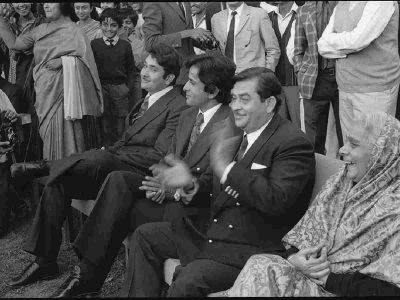
Shammi was a partner in Plaza Cinema in the mid-1960s, along with film producer FC Mehra.
“Shammi Kapoor sold his stake later. He is possibly the only member of the Kapoor clan to have had a stake in a picture hall,” informs Ravinder Kumar, another film buff of Delhi.
Shashi Kapoor’s ‘householder’ And Daryaganj
Raj Kapoor always considered Shashi Kapoor as his son more than his brother. One of Shashi’s early films Householder was primarily shot in a large home near Times House in Daryaganj.
The house belonged to Jaidev Trivedi, a prominent theatre artist in the Capital, and a popular Hindi newsreader for All India Radio. Trivedi once mentioned that Prithviraj Kapoor had visited his house with Shashi Kapoor.
Householder was directed by James Ivory and produced by Ismail Merchant. Mihir Pandya, in his book Cinema Aur Shahar Vaya Delhi (Cinema and City via Delhi), notes that Householder written by Ruth Prawer Jhabvala features significant scenes in the two iconic Delhi landmarks – Jantar Mantar and Jama Masjid.
Apart from Householder, Shashi Kapoor can be seen driving a Fiat car on the streets of the Capital in New Delhi Times released in 1986.
The Kapoor family’s connection with Delhi is deeply rooted, and it continues to be a place where their memories are cherished and celebrated. Their impact on the cultural fabric of the city, from stage to screen, remains significant even today.

